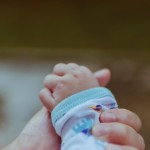 September is Infant Mortality Month. According to the CDC, infant mortality rates hit a record low in 2014, when there were only 6 infant deaths per 1,000 babies born. However, there are still racial and geographic differences in who is affected by infant mortality. As Infant Mortality Month winds down, KID wants to leave you with an overview of some of the most important safety issues affecting infants and their caregivers.
September is Infant Mortality Month. According to the CDC, infant mortality rates hit a record low in 2014, when there were only 6 infant deaths per 1,000 babies born. However, there are still racial and geographic differences in who is affected by infant mortality. As Infant Mortality Month winds down, KID wants to leave you with an overview of some of the most important safety issues affecting infants and their caregivers.
Two of the leading causes of infant mortality are sudden unexpected infant death (SUID) and accidents or unintentional injuries. Although the exact mechanisms underlying SUID aren’t fully understand, we do understand that certain risk factors related to infants’ sleep environments play a key role. At KID, we are dedicated to reducing the risk that all infants face from these issues by helping caregivers create safe sleep environments for infants.
These are the key components of a safe sleep environment:
- Use cribs manufactured after June 28th, 2011 that meet the strictest safety standards. Make sure cribs are properly assembled and have no missing or broken parts. Position the crib in a smoke free area. Cribs should be fitted with a firm mattress covered in a fitted sheet.
- There should be no other bedding in the crib, including crib bumper pads, blankets, pillows, or sleep positioners – bare is best! Keep other toys and stuffed animals out of the crib as well. Even though these items might look cute and cuddly, they are unnecessary and pose risks of suffocation and strangulation.
- Always place an infant to sleep on their back for naps and at night. Babies should be dressed in appropriate sleepwear that prevents them from overheating during the warmer months. Use sleep sacks rather than blankets to keep babies warm during colder months.
- Position the crib away from windows with corded blinds or baby monitors with cords. Window blind cords and electrical cords can pose a strangulation risk if they are within rich of a baby. Keep three feet away at a minimum – better, #GoCordless.
These safety standards have been proven to reduce risk factors for SUID deaths (which include SIDs and other infant deaths) and also reduce the risk of unintentional injuries. Safe sleep environments play a crucial role in keeping babies safe, since naptime and nighttime are often the only times when caregivers assume it is safe to leave infants unattended.
Of course, the burden for creating safe sleep environments is not only on parents and caregivers. Manufacturers and retailers are also responsible for fostering safer sleep by creating safer products and following recall protocols by alerting consumers to recalls. We also depend on regulators, such as the Consumer Product Safety Commission, to ban unsafe products and set strict, mandatory, safety standards. By advocating at all levels of the product safety system, KID hopes to make safe sleep a guarantee for all children and caregivers.
For more information on safe sleep check out our Safe Sleep Guidelines or the Safe to Sleep campaign at the NICHD.



1 Comment